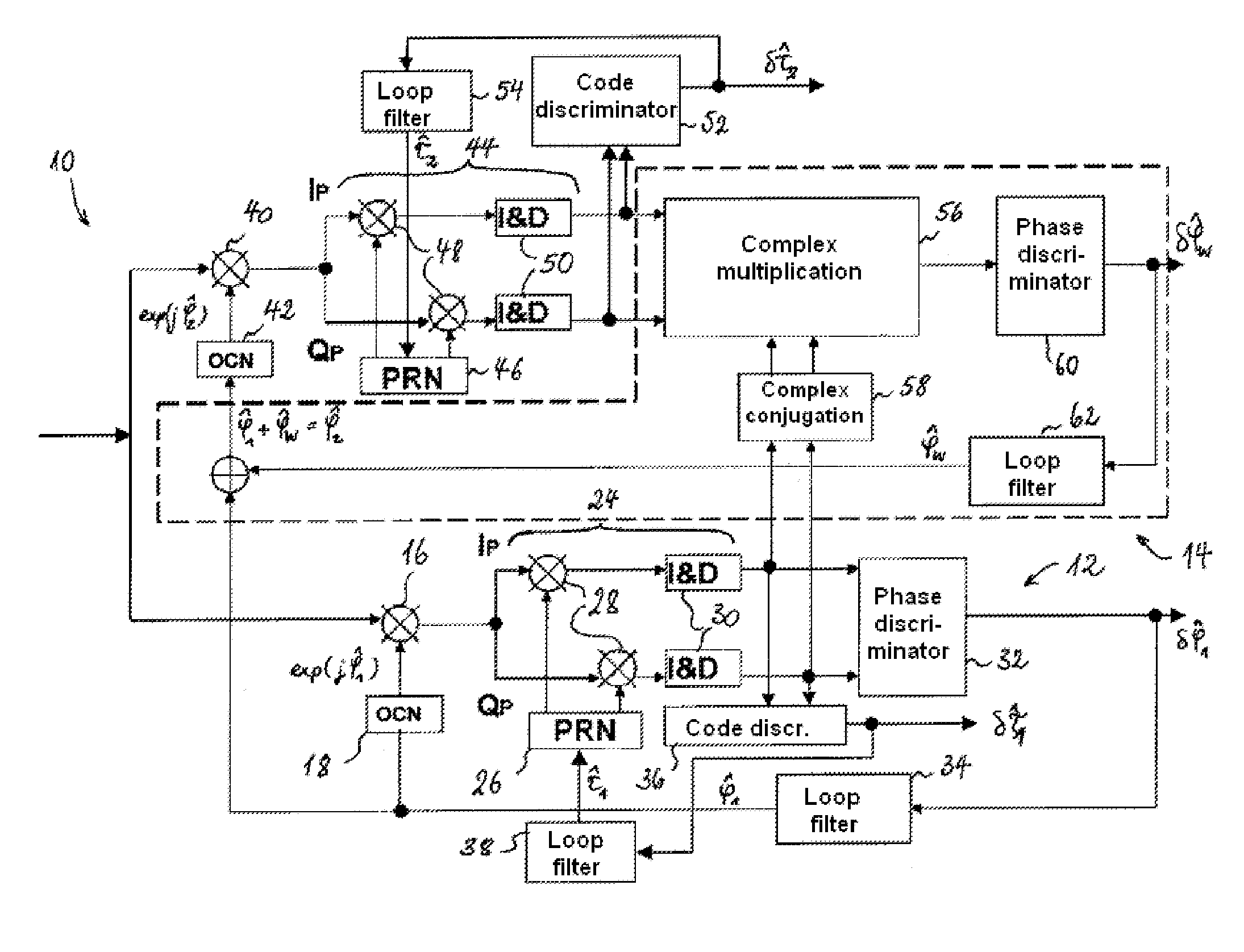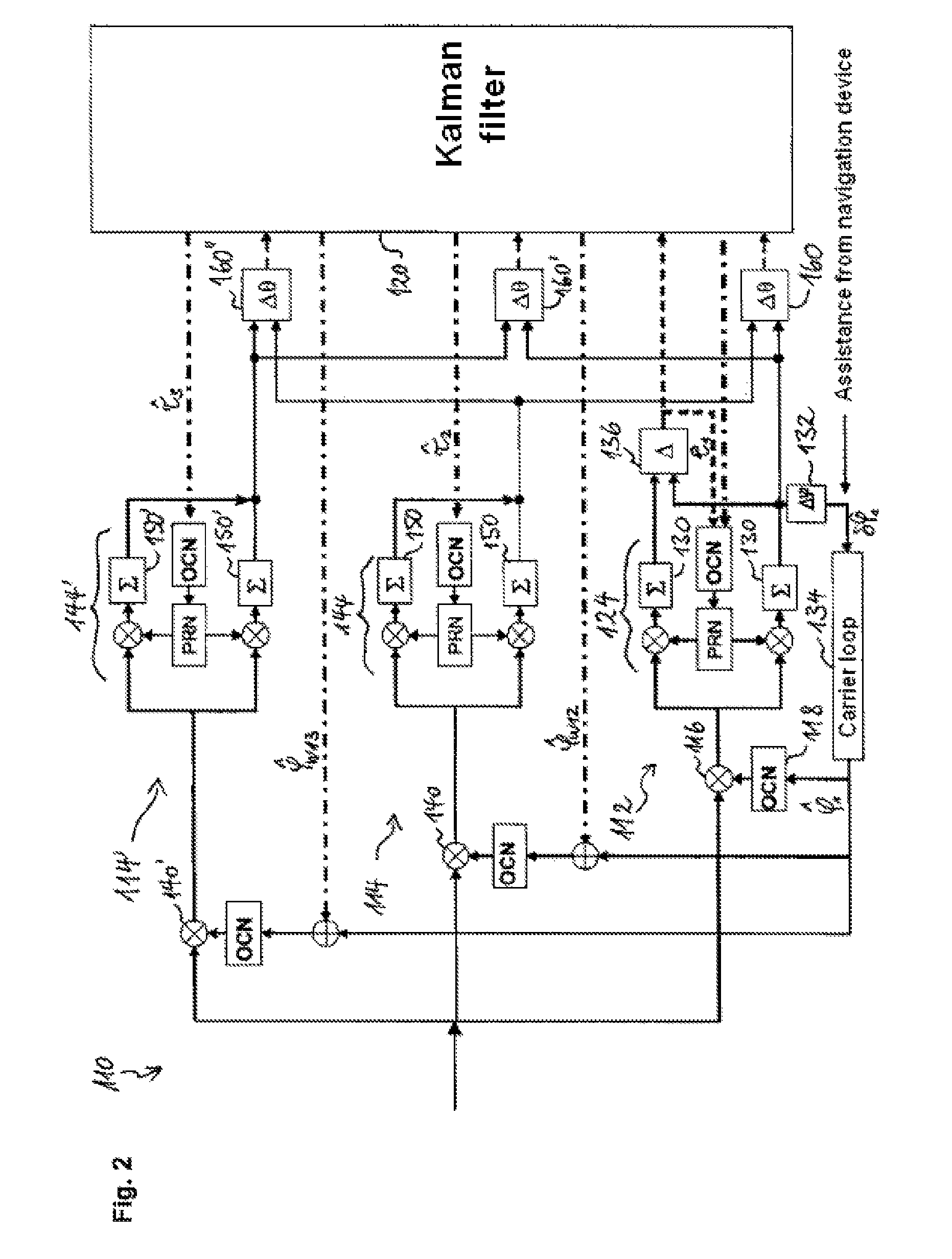Radionavigation signal tracking device
a technology of radioonavigation and tracking device, which is applied in the field of radioonavigation, can solve the problems of ambiguous phase measurement, high risk of dropout, and unknown number of integer cycle between the satellite and the receiver, and achieve the effect of increasing the robustness of phase measuremen
- Summary
- Abstract
- Description
- Claims
- Application Information
AI Technical Summary
Benefits of technology
Problems solved by technology
Method used
Image
Examples
Embodiment Construction
[0027]A radionavigation signal receiver can carry out code measurements (which are unambiguous) and phase measurements (ambiguous in terms of an integer number of cycles) on the radionavigation signals which it receives from the various satellites which are in visibility (i.e. above the horizon). A multifrequency receiver may carry out these measurements on at least two distinct carrier frequencies f1 and f2. Assuming a dual-frequency receiver, for each satellite in visibility and at each time step (tk), there may therefore be two code measurements, notated P1j(tk) and P2j(tk), and two phase measurements, notated φ1j(tk) and φ2j(tk), on the frequencies f1 and f2, where upper index (j) indicates the transmitter (satellite or pseudolite) from which the signal arriving at the receiver originates. Since the satellites orbit the Earth, only some of them are visible at a given moment from the location of the receiver. To simplify notation, time dependence and the satellite index will not ...
PUM
 Login to View More
Login to View More Abstract
Description
Claims
Application Information
 Login to View More
Login to View More - R&D
- Intellectual Property
- Life Sciences
- Materials
- Tech Scout
- Unparalleled Data Quality
- Higher Quality Content
- 60% Fewer Hallucinations
Browse by: Latest US Patents, China's latest patents, Technical Efficacy Thesaurus, Application Domain, Technology Topic, Popular Technical Reports.
© 2025 PatSnap. All rights reserved.Legal|Privacy policy|Modern Slavery Act Transparency Statement|Sitemap|About US| Contact US: help@patsnap.com



